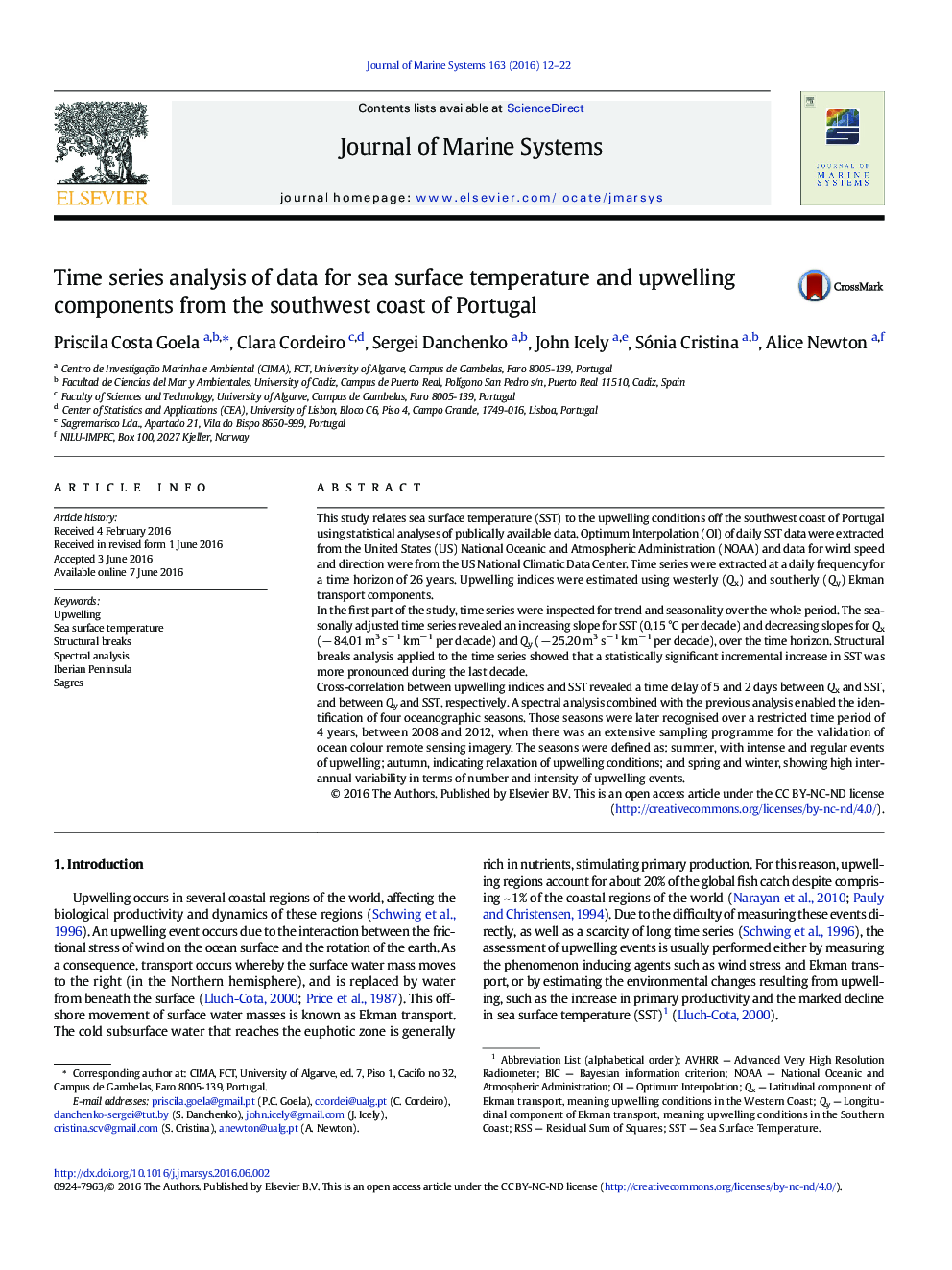| کد مقاله | کد نشریه | سال انتشار | مقاله انگلیسی | نسخه تمام متن |
|---|---|---|---|---|
| 6386615 | 1627267 | 2016 | 11 صفحه PDF | دانلود رایگان |
- 26Â years of SST and upwelling indices data were evaluated in SW Portugal.
- The aim was to delineate oceanographic seasons based on upwelling regimes.
- SST increased at a rate of 0.15 °C per decade.
- Favourable upwelling indices were followed by SST decreases, with lags of 2-5Â days.
- Four seasons of distinct upwelling regimes were identified.
This study relates sea surface temperature (SST) to the upwelling conditions off the southwest coast of Portugal using statistical analyses of publically available data. Optimum Interpolation (OI) of daily SST data were extracted from the United States (US) National Oceanic and Atmospheric Administration (NOAA) and data for wind speed and direction were from the US National Climatic Data Center. Time series were extracted at a daily frequency for a time horizon of 26 years. Upwelling indices were estimated using westerly (Qx) and southerly (Qy) Ekman transport components.In the first part of the study, time series were inspected for trend and seasonality over the whole period. The seasonally adjusted time series revealed an increasing slope for SST (0.15 °C per decade) and decreasing slopes for Qx (â 84.01 m3 sâ 1 kmâ 1 per decade) and Qy (â 25.20 m3 sâ 1 kmâ 1 per decade), over the time horizon. Structural breaks analysis applied to the time series showed that a statistically significant incremental increase in SST was more pronounced during the last decade.Cross-correlation between upwelling indices and SST revealed a time delay of 5 and 2 days between Qx and SST, and between Qy and SST, respectively. A spectral analysis combined with the previous analysis enabled the identification of four oceanographic seasons. Those seasons were later recognised over a restricted time period of 4 years, between 2008 and 2012, when there was an extensive sampling programme for the validation of ocean colour remote sensing imagery. The seasons were defined as: summer, with intense and regular events of upwelling; autumn, indicating relaxation of upwelling conditions; and spring and winter, showing high interannual variability in terms of number and intensity of upwelling events.
Journal: Journal of Marine Systems - Volume 163, November 2016, Pages 12-22
